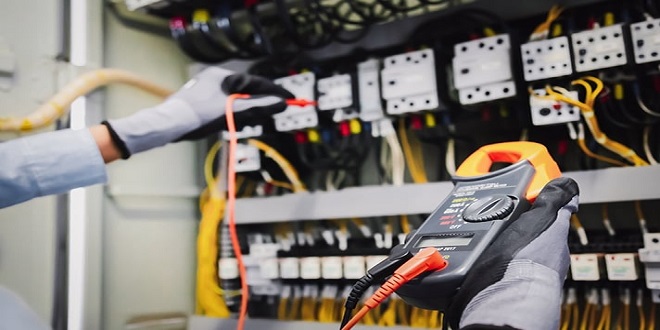Electron flow and conventional flow
If an electrical pressure (electromotive force or voltage) is applied to a conductor, a directional movement of electrons will take place (for example when connecting a battery to a wire). This is because the electrons are attracted to the positive side and repelled from the negative side.
With the switch closed, the surplus electrons at the negative terminal will flow through the lamp back to the electron-deficient positive terminal. The lamp will light and the chemical energy of the battery will keep the electrons moving in this circuit from negative to positive. This movement from negative to positive is called the electron flow and will continue whilst the battery supplies the pressure – in other words, whilst it remains charged.
Effects of current flow
The heating effect is the basis of electrical components such as lights and heater plugs. The magnetic effect is the basis of relays and motors and generators. The chemical effect is the basis for electroplating and battery charging.
Describing electrical circuits
Three descriptive terms are useful when discussing electrical circuits.
- Open circuit. This means the circuit is broken therefore no current can flow.
Short circuit. This means that a fault has caused a wire to touch another conductor and the current uses this as an easier way to complete the circuit.
- High resistance. This means a part of the circuit has developed a high resistance (such as a dirty connection), which will reduce the amount of current that can flow.
Conductors, insulators and semiconductors
All metals are conductors. Silver, copper and aluminum are among the best and are frequently used. Liquids that will conduct an electric current, are called electrolytes. Insulators are generally nonmetallic and include rubber, porcelain, glass, plastics, cotton, silk, wax paper and some liquids. Some materials can act as either insulators or conductors depending on conditions. These are called semiconductors and are used to make transistors and diodes.
Factors affecting the resistance of a conductor
In an insulator, a large voltage applied will produce a very small electron movement. In a conductor, a small voltage applied will produce a large electron flow or current. The amount of resistance offered by the conductor is determined by a number of factors.
- Length – the greater the length of a conductor the greater is the resistance.
- Cross-sectional area (CSA) – the larger the cross-sectional area the smaller the resistance.
Resistors and circuit networks
Good conductors are used to carry the current with minimum voltage loss due to their low resistance. Resistors are used to control the current flow in a circuit or to set voltage levels. They are made of materials that have a high resistance.
Magnetism and electromagnetism
Magnetism can be created by a permanent magnet or by an electromagnet (it is one of the three effects of electricity remember). The space around a magnet in which the magnetic effect can be detected is called the magnetic field. The shape of magnetic fields in diagrams is represented by flux lines or lines of force.
Finally Comment
Discuss the developments of sensors and actuators. Consider the reasons for these developments and use examples. Why is the integration of electronics within sensors and issue? Produce a specification sheet for an anti-lock brake system wheel speed sensor, detailing what it must be able to do.






